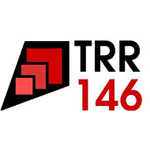
Seminar über Theorie der kondensierten Materie / TRR146 Seminar
Feb. 19, 2016 at
10:30 a.m.
in
Newtonraum, 01-122, Staudingerweg 9
F. Schmid
friederike.schmid@uni-mainz.de
P. Virnau
virnau@uni-mainz.de
L. Stelzl
lstelzl@uni-mainz.de
Kinetic theory of polar active matter
Prof. Thomas Ihle (Greifswald University, Germany)
Models of self-driven agents similar to the Vicsek model with metric [1] and topological interactions [2] are studied by means of kinetic theory. In these models, particles try to align their travel directions with the average direction of their neighbors. At strong alignment a globally ordered state of collective motion forms. An Enskog-like kinetic theory is derived from the exact equation for a Markov chain in phase space using Boltzmann's mean-field approximation of molecular chaos. Hydrodynamic equations are derived by a non-standard Chapman-Enskog expansion and expressions for transport coefficients in terms of microscopic parameters are obtained.The kinetic equation is solved numerically by a non-local Lattice Boltzmann-like algorithm. Steep soliton-like waves are observed that lead to an abrupt jump of the global order parameter if the noise level is changed. The shape of the wave is shown to quantitatively agree within 3% with agent-based simulations at large particle speeds [3]. This provides a mean-field mechanism to change the second-order character of the flocking transition to first order. At small densities and realistic particle speeds, the mean-field assumption of Molecular Chaos is invalid near the onset of collective motion, and correlation effects become relevant. I will show how to self-consistently include correlation effects at the level of ring-kinetic theory [4].
Instead of just one kinetic equation, an additional equation for the time evolution of two-particle correlations will be derived. This equation is solved numerically for a homogeneous system and shown to be in excellent agreement with agent-based simulations in certain parameter ranges.
[1] T. Ihle, Phys. Rev. E 83, 030901 (2011).
[2] Y. L. Chou et al., Phys. Rev. E 86, 021120 (2012).
[3] T. Ihle, Phys. Rev. E 88, 040303 (2013).
[4] Y. L. Chou et al., Phys. Rev. E 91, 022103 (2015).